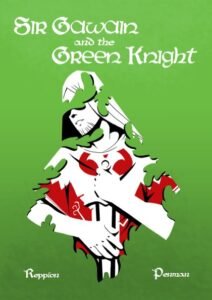In an interview with CNN, writer Neil Gaiman said, “The biggest pitfall to avoid is not writing. Not writing is really, really easy to do, especially if you’re a young writer. The hope that elves will come in the night and finish it for you, is a very common one to have. That is my main recommendation. You have to write, and you have to finish what you write and beyond that, it’s all detail.”
The first issue of The Sandman: Overture was released in November 2013.
In March 2014, Vertigo announced, a day after the delayed second issue of the six-part miniseries hit shelves, the series will be published as one issue every few months, instead of the bi-monthly publishing schedule first promised.
Issue #2 was delayed from a December release to a February, and was released in March 2014. Mr Gaiman noted on Tumblr:
[Artist J.H. Williams III and I are] both really sorry about the delay. It’s unprofessional, and is mostly due to the giant signing tour I was on from June, and me not getting script written on the tour, with knock-on effects. We’re hoping it’ll be the only delay though..
But instead Overture #3 was also delayed and released in July 2014. Overture #4 was released in December 2014. Overture #5 is expected to ship in June 2015.
There’s no doubt that the series holds something special for fans of the original breakthrough series – a run of 75 issues that opened new markets for comic books, and has been collected and re-released in any number of formats and bindings. There are references to the series of old – the explanation for Dream’s exhaustion in the very first issue of the original series in 1989 is finally explained. Dream’s father is revealed as a Father Time archetype, seems to have Destiny as his favourite child, and does not follow a linear existence. And we have a contagion of madness spreading amongst stars, which suggests the solution of a mass lobotomy.
But if the current scheduling continues, it will take 3 years to release 6 issues, whereas it took 7 years for the original 75 issues. Overture was intended to celebrate 25 years since The Sandman was first published, but by the time it is released in its entirety, it will instead mark the 28th anniversary.
This is hardly the first time this has happened in comics. The epic delay in the publication of Wildstorm Comics’ controversial and ground-breaking publication, The Authority, in 2002, has been the subject of scholarly discussion. The years long delay in Warren Ellis’s book, Planetary also published by Wildstorm, frustrated readers. But what right do readers have to expect prompt creative outcomes in comic books?
In his blog, Dan Cohen, the Executive Director of the Digital Public Library of America, in the context of scholarly publication, describes:
“….the magic of the last stage of scholarly production between the final draft and the published book: “What happens now is the creation of the social contract between the authors and the readers. We agree to spend considerable time ridding the manuscript of minor errors, and the press spends additional time on other corrections and layout, and readers respond to these signals—a lack of typos, nicely formatted footnotes, a bibliography, specialized fonts, and a high-quality physical presentation—by agreeing to give the book a serious read” … For the ease of conversation, let’s call the two sides of the social contract of scholarly publishing the supply side and the demand side. The supply side is the creation of scholarly works, including writing, peer review, editing, and the form of publication. The demand side is much more elusive—the mental state of the audience that leads them to “buy” what the supply side has produced. In order for the social contract to work, for engaged reading to happen and for credit to be given to the author (or editor of a scholarly collection), both sides need to be aligned properly.”
In 2000, Stephen King ceased publishing his online serialised novel, The Plant. Only six of the instalments were published. The first five instalments were paid for by gradually diminishing market, originally 1500000 readers, and then finally 40000 readers when King stopped writing. Readers were originally charged $1 an instalment, and then $2 an instalment. The last instalment was issued at no charge, with “the fates of several characters” resolved so as to provide a sense of story completeness to readers. In a story published by CBS one of King’s assistants noted that King has “a “moral obligation” to himself and to his fans to write volume five in The Dark Tower series”, a more financially lucrative venture. The moral obligation did not extend to completing The Plant, which remains unfinished.
The rationale in Dan Cohen’s blog is perhaps even more applicable to periodical publications including comic books. In both Mr King’s case, with other projects proving more financially tempting than finishing The Plant, and in the case of Mr Gaiman, representing though his publisher that The Sandman: Overture story would be bi-monthly and now is half-yearly, readers bought the periodicals on the basis of timely completion within the promised timeframe. Start something, and you should finish it. Or finish it before it is published, so as not to interfere in the social contract of timely delivery of the publication. Readers should not have to wait for the elves in the night.

